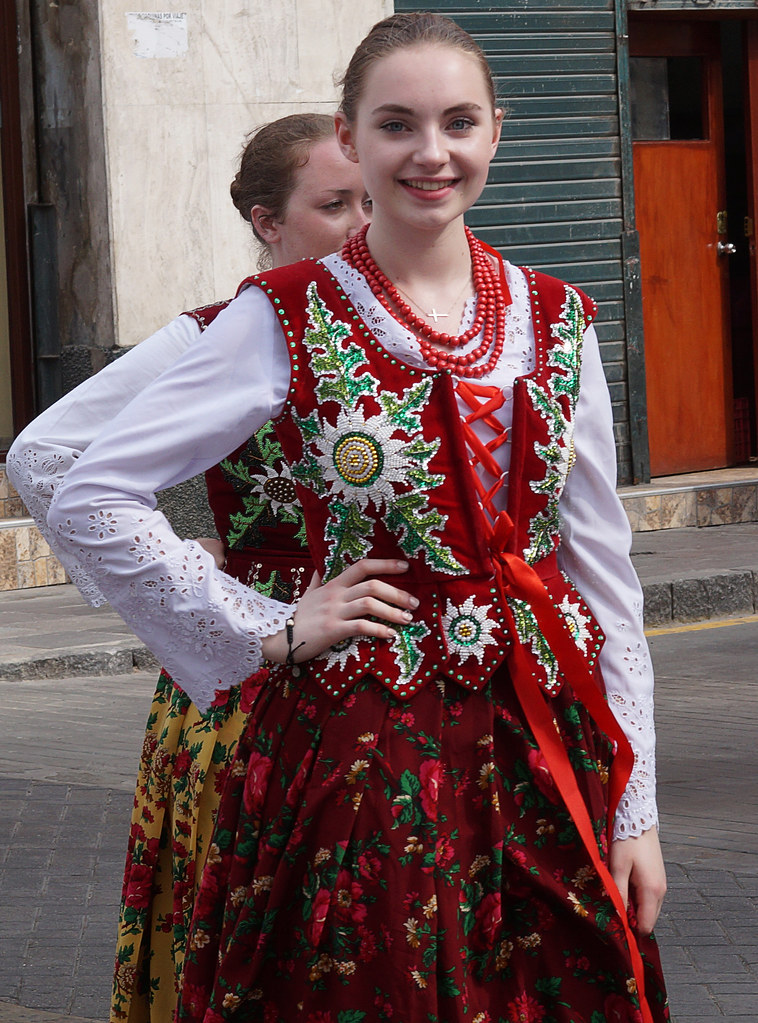
Pin by Peter Ranic on POLAND Polish traditional costume, Polish clothing, Traditional outfits
The Polish culture has greatly evolved over the years having been influenced by the geographic location of the country at the confluence of European regions with their distinct cultures. The earliest culture of Poland traces its origin to the culture of the Early Slavs who settled in the country.

Polish Folk Costumes / Polskie stroje ludowe Polish traditional costume, Polish clothing
Zakopane (1938) Szczawnica (1939) Gorals from Cieszyn Silesia Tatra Gorals in 1877 Żywiec Gorals in 2016 Żywiec Gorals in traditional costume Podhale Gorals in traditional costume Subcarpathian region / Podkarpacie Rzeszów [4] Uplanders Lasowiacy

Quick overview of folk costumes from Poland (warning pictureheavy) Polish traditional
The guide for whole year. - TimelessPoland What to wear in Poland? The guide for whole year. By Krystian July 29, 2023 Are you going to Poland and not know what to wear. Read this blog and know what to wear in Poland! Ciema! Poland is a country with a lot of history, culture, and beautiful scenery.
:max_bytes(150000):strip_icc()/europe--poland--carpathian-mountains--zakopane--international-festival-of-mountain-folklore--performers-in-traditional-costume-530252298-5a96720104d1cf00385dbafe.jpg)
A Guide to Polish Culture and Customs
Biłgoraj costume is classified as archaic. All its elements are made of linen. The original women's headpiece consisted of a "chamełka" (a type of a supportive bonnet) with a "rańtuch" (a scarf.

Traditional wedding in folk costumes from Łowicz Folk clothing, Folk costume, Polish clothing
Polish traditional clothing, or 'stroje', stands as a vibrant testament to the nation's rich cultural heritage. Each piece, adorned with intricate embroidery and colorful patterns, tells a story of historical epochs, reflecting Poland's artistic ingenuity and storied past.

2013 Festival Gallery Polish clothing, Traditional outfits, Folk fashion
Polish clothing. This category describes traditional and historic Polish clothing. Modern Polish clothing should be included in: Category:Polish fashion . Wikimedia Commons has media related to Clothing of Poland.

Poland Festivals & Traditions Where in Our World?
100 Years of Polish Fashion Captured in Elegant Book. 'Reason & Flair: A Century of Fashion in Poland' is the title of an eye-catching and in-depth book-album summarising the last hundred years of Polish fashion and culture. The publisher of the publication is the Adam Mickiewicz Institute in co-operation with the OsnoVa publishing house.

Polish Folk Costumes / Polskie stroje ludowe — Lachy Sądeckie, southern Poland. Source
Polish ( język polski, polszczyzna) is a language of the Lechitic subgroup of West Slavic languages (also spelled Lechitic) composed of Polish, Kashubian, Silesian and its archaic variant Slovincian, and the extinct Polabian language. All these languages except Polish are sometimes classified as a Pomeranian subgroup.

A few examples of Polish regional dresses ) Polish Folk Costumes / Polskie stroje ludowe
Traditional Polish cuisine includes hearty dishes such as duck soup ( czarnina ), red beet soup ( barszcz ), dumplings ( pierogi ), smoked salmon and eel, kielbasa sausage and sauerkraut, and pork and poultry dishes, the latter often served with a sweet sauce.

Polish Clothing, Folk Clothing, Historical Clothing, Ukraine, Traditional Fashion, Traditional
A traditional folk costume is a significant part of Poland's history and culture. The Polish national dress strikes everyone by possible colors and bright embroidery ornaments. There is no one unique style, the folk attire varies from one region to another. The ethnic specialists find 60 variations of the ladies' Polish traditional dress.

Polish Folk Dress Polish traditional costume, Folk dresses, Polish dress
Reason & Flair: A Century of Fashion in Poland, published by the Adam Mickiewicz Institute in cooperation with OsnoVa publishing, provides an overview of the last century of Polish fashion and culture. 1. Fashion house Catalogue of Bogusław Herse Fashion House in Warsaw, 1906/1907 season, in German, photo: courtesy of the National Museum in Warsaw

A few examples of Polish regional dresses ) Polish Folk Costumes / Polskie stroje ludowe
Traditional Polish Clothing and Fashion: A Reflection of Culture and History. Poland has a long and rich history that is reflected in its traditional clothing and fashion. The country has been through many changes over the centuries, but its traditional clothing has remained largely the same. Traditional Polish clothing is very colorful and.

Polish Folk Costumes / Polskie stroje ludowe — A few examples of Polish regional dresses
Polish folk costumes has been widely recognized as an important part of the heritage of traditional peasant culture. Poland remains one of the few European countries in which with the onset of the 21st century one can still encounter some "living" manifestations of folk culture. The traditional costumes usually people are wearing on festive.

Kraków, southern Poland. Image © Globtrotter... Polish Folk Costumes / Polskie stroje ludowe
Poland's traditional clothing has a lot to say about the country's long and diverse history. It reflects the national identity and its distinct style varies between its different regions. Summary Close 1. Exploring different regions 2. Religious influences 3. Celebrations and special events 4. Making traditional clothing at home 5.

Loving Poland Polish traditional costume, Polish clothing, Traditional outfits
The most impressive pieces of Polish national clothing are headdresses. They are unique, very delicate, and sophisticated. Read also: Wedding traditions in Poland. Everything you should know about a Polish wedding The 19th century brought the biggest boom of the Polish folk dress.

Krakowiaki Poland Polish traditional costume, Traditional outfits, Traditional dresses
Poland is a predominantly Catholic country, with around 90% of Polish people identifying as Roman Catholics. This means that Catholic values and the Catholic Church influence social, artistic, and political life. Close to 1% of the Polish population is Eastern Orthodox. Representatives of other religions are less numerous.